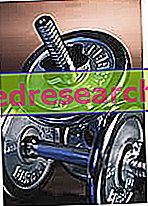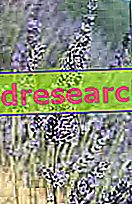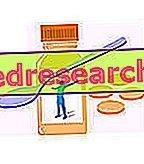Hydrogen cyanide (HCN), once known as prussic acid, is a colorless, volatile and extremely poisonous liquid, recognizable by the strong odor of bitter almond. Hydrocyanic acid, freely absorbed from the intestine, from the skin and from the alveoli, owes its venomic power to the ability of the cyanide ion (CN-) to bind to the ferric atom present in the cytochrome oxidases, preventing it from carrying out the related biological actions.

Symptoms of hydrocyanic acid poisoning
After exposure to acid, there is an increase in the frequency and depth of breaths, with the onset of dizziness, intense headache, rapid loss of consciousness and convulsions, up to respiratory arrest. At non-lethal doses, surviving patients report having perceived the classic smell of bitter almonds along with sensations of metallic taste in the mouth (bitter mouth), anxiety and shortness of breath. As regards the long-term effects of cyanidric acid intoxication, a greater incidence of neurological problems of various types, including parkinsonism, has been reported.
Notes on the treatment of cyanidric acid intoxication
In the human body, hydrocyanic acid is mainly metabolized by rhodanases, liver enzymes that catalyze the conjugation between cyanide ions (CN-) and thiosulfate (S 2 O 3 ). This process can be accelerated by administering sodium thiosulphate, which usually occurs at dosages of 50 ml in a 25% solution in adults, and at doses of 1.6 mg / kg in a 50% solution in children. Generally, sodium thiosulphate is administered together with sodium nitrite, used in doses of 300 mg intravenously every 10 minutes in the adult, while the pediatric dose is 0.15-0.33 mg / kg in solution to 3%.
An alternative treatment involves the use of cobalt edetate and hydroxocobalamin, using glucose as a support.
Sources of hydrocyanic acid
There are numerous testimonies of the past concerning the use of hydrocyanic acid for suicide / homicide and for mass exterminations. Today, this substance is variously used at the industrial level in the synthesis of plastics, in metallurgy, in the pharmaceutical industry and in the disinfection of rats and anthropods. Fortunately, although it is extremely poisonous, hydrocyanic acid is very volatile and therefore can be removed by simply ventilating the premises.
Cyanogenic glycosides are a class of vegetable substances consisting of a sugary part and a non-sugary portion, called aglycone, which, by hydrolysis, releases cyanidric acid. The most common cyanogenic glycoside is the amygdalin enclosed in bitter almonds and more generally in the seeds and leaves of Rosaceae (bitter almonds, apricots, peaches, cherries, plums, plums and Lauroceraso). By hydrolysis, amygdalin releases hydrocyanic acid (bitter almond odor), benzaldehyde (sweet almond smell) and two glucose molecules. This reaction, impracticable by human enzymes, occurs with the contribution of intestinal bacterial flora.
A bitter almond contains about one milligram of hydrocyanic acid. For a child the simple ingestion of a dozen bitter almonds can therefore be fatal, while for an adult it takes 50-60.
| Plant | mg / 100 g of cyanhydric acid | glycoside |
|---|---|---|
| Bitter almonds | 250 | Amygdalin |
| Cassava root (cassava) | 53 | linamarin |
| Apple (seeds) | 70-75 | Amygdalin |
| Sorghum (whole) | 250 | Durrina |
| Plum (hazel) | 70-75 | Amygdalin |
| Nectarine (hazel) | 20 | Amygdalin |
| Lima beans | 10-312 | linamarin |
Hydrocyanic acid is included in the long list of toxic substances present in cigarette smoke, given that each of them releases 100 to 300 micrograms of hydrocyanic acid.



